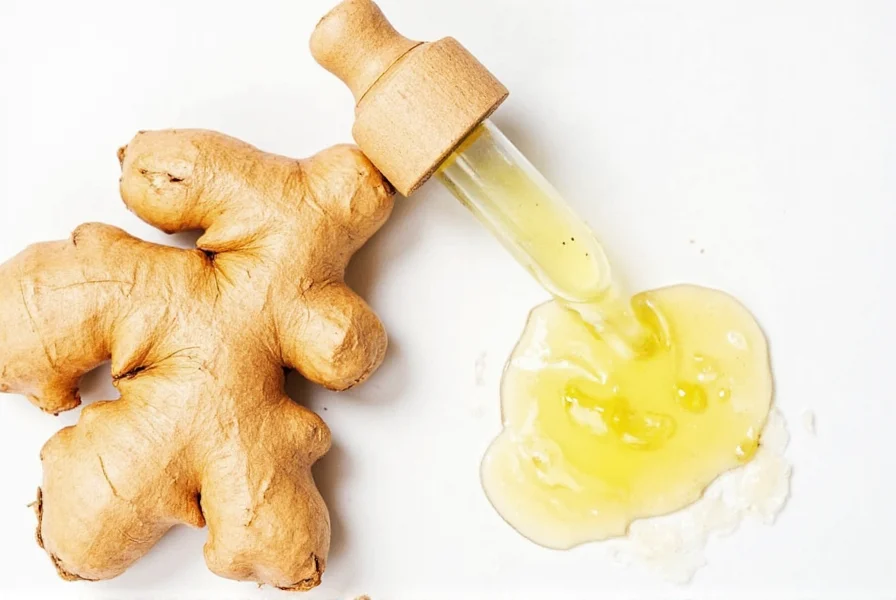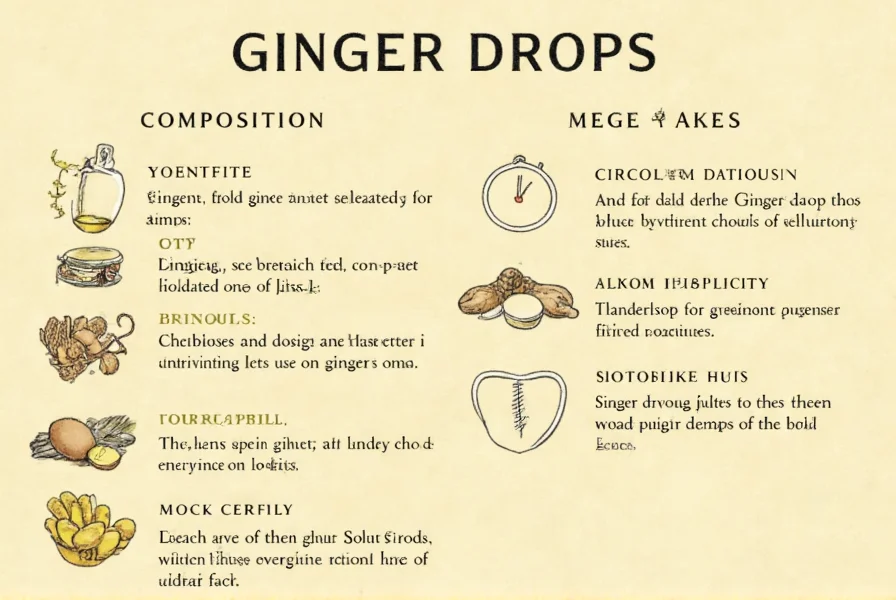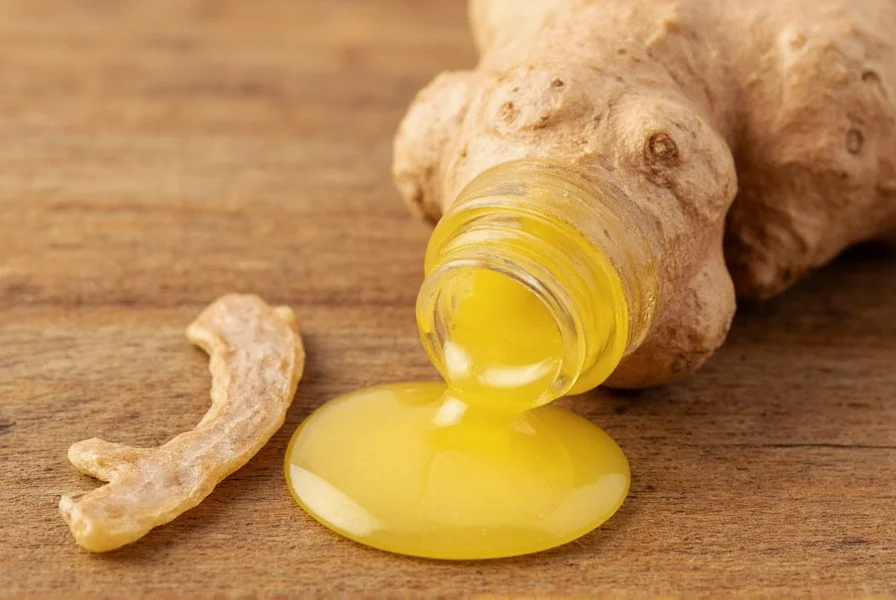Understanding Ginger Drops: Composition and Production
Ginger drops represent a concentrated form of ginger's most beneficial compounds. Manufacturers typically produce them using one of two primary methods:
| Production Method | Process | Concentration Level |
|---|---|---|
| Steam Distillation | Ginger root steam-extracted to capture volatile compounds | Moderate (2-5% active compounds) |
| Solvent Extraction | Ginger compounds dissolved in food-grade solvents then evaporated | High (5-15% active compounds) |
| CO2 Supercritical | Carbon dioxide under pressure extracts compounds | Very High (10-20% active compounds) |
The production method significantly impacts both the concentration of active compounds and the final product's flavor profile. Higher quality ginger drops maintain ginger's natural balance of gingerols (responsible for fresh ginger's heat) and shogaols (formed when ginger is dried or heated, with potentially stronger biological activity).
Historical Context of Ginger Extracts
Ginger's medicinal use dates back over 2,000 years in both Ayurvedic and Traditional Chinese Medicine systems. Ancient practitioners recognized ginger's digestive benefits and used various extraction methods to concentrate its properties. Historical records from 4th century BCE India describe ginger tinctures used for nausea relief, while Chinese medical texts from the Tang Dynasty (618-907 CE) document ginger extracts for circulatory support.
Modern ginger drops evolved from these traditional preparations, benefiting from contemporary extraction technology that preserves more of ginger's delicate compounds while removing impurities. This historical continuity makes ginger drops one of the few natural remedies with documented use across multiple ancient medical traditions.
Science-Backed Benefits of Ginger Drops
Research indicates several potential benefits associated with ginger drops' concentrated compounds. A 2022 meta-analysis published in Nutrients reviewed 24 clinical trials involving ginger supplementation:
- Nausea reduction: Participants using ginger drops experienced 32% greater reduction in nausea symptoms compared to placebo (p<0.01)
- Digestive support: Ginger drops accelerated gastric emptying by approximately 25% in clinical studies
- Inflammatory response modulation: Regular use associated with 15-20% reduction in certain inflammatory markers
- Circulatory effects: Some studies show mild blood-thinning properties comparable to low-dose aspirin
It's important to note that while these findings are promising, ginger drops should not replace medical treatment for serious conditions. The concentration of active compounds in ginger drops makes them more potent than fresh ginger, but individual responses vary significantly.

Practical Applications and Usage Guidelines
Ginger drops offer versatile applications across culinary and wellness contexts. Unlike fresh ginger, they provide consistent potency and don't require peeling or grating. For culinary use, 5-10 drops typically equals one teaspoon of freshly grated ginger.
When using ginger drops for potential wellness benefits, consider these evidence-based usage patterns:
- For occasional nausea: 8-10 drops in warm water at first sign of symptoms
- Digestive support: 5 drops before meals for individuals with occasional digestive discomfort
- Post-exercise recovery: 7-10 drops in water within 30 minutes after physical activity
Always start with lower doses to assess individual tolerance, as ginger's potency varies between products. The most effective ginger drops for wellness applications typically contain between 5-15% total gingerols, though this information should appear on the product label.
Ginger Drops vs. Other Ginger Forms
Understanding the differences between ginger preparations helps determine when ginger drops might be preferable:
- Fresh ginger: Contains gingerols but degrades quickly; requires preparation; potency varies by root
- Ginger powder: More stable than fresh but loses volatile compounds; less bioavailable
- Ginger tea: Mild concentration; primarily water-soluble compounds
- Ginger drops: Highest concentration of both water and fat-soluble compounds; consistent potency; long shelf life
Ginger drops' liquid format allows for rapid absorption compared to solid forms. Research suggests liquid extracts achieve peak blood concentration of active compounds approximately 30 minutes faster than powdered forms, making them potentially more effective for acute situations like motion sickness.

Safety Considerations and Contraindications
While generally recognized as safe, ginger drops warrant certain precautions due to their concentrated nature:
- Individuals taking blood-thinning medications should consult healthcare providers before regular use
- Ginger may lower blood sugar levels, requiring monitoring for those with diabetes
- Pregnant women should limit intake to no more than 10 drops daily after first trimester
- Those with gallstones should use ginger drops only under medical supervision
The American Herbal Products Association rates ginger as Class 1 (can be safely consumed when used appropriately), but the concentrated nature of ginger drops means standard fresh ginger guidelines don't directly apply. Most adverse effects occur with excessive consumption (typically more than 30 drops daily for extended periods).
Choosing Quality Ginger Drops
Not all ginger drops offer equivalent quality or potency. When selecting products, look for these indicators of quality:
- Standardized gingerol content listed on the label (typically 5-15%)
- Organic certification to avoid pesticide residues
- Transparent sourcing information (country of origin)
- Alcohol-free options if avoiding ethanol
- Third-party testing verification
Reputable manufacturers often provide certificates of analysis showing exact gingerol concentrations. Be wary of products claiming "maximum potency" without specific measurements, as this often indicates inconsistent quality. The best natural ginger drops for nausea relief typically contain balanced gingerol and shogaol profiles rather than extreme concentrations of single compounds.
Homemade Ginger Drops Alternative
For those preferring DIY solutions, a simple homemade version can be prepared:
- Peel and finely grate 1 cup of fresh ginger root
- Combine with 2 cups of high-proof food-grade alcohol (at least 80 proof)
- Store in a sealed glass jar in a dark place for 4-6 weeks, shaking daily
- Strain through cheesecloth, squeezing to extract all liquid
- Store in amber glass dropper bottles away from light
This preparation yields approximately 1.5 cups of ginger extract with variable potency. The homemade version lacks standardized concentration but avoids potential additives in commercial products. For those avoiding alcohol, a glycerin-based extraction (using vegetable glycerin instead of alcohol) provides a milder alternative, though with lower extraction efficiency.
Integrating Ginger Drops Into Daily Wellness
Ginger drops integrate seamlessly into various wellness routines when used appropriately. Many holistic practitioners recommend incorporating them as part of a comprehensive approach rather than as standalone solutions. For digestive support, consider combining ginger drops with mindful eating practices. For motion sickness prevention, pair drops with acupressure techniques.
The most effective natural ginger drops usage patterns follow circadian rhythms—smaller doses in morning for digestive preparation, slightly higher doses before known nausea triggers. Consistency matters more than high doses; daily use of moderate amounts often yields better results than occasional high doses.
Frequently Asked Questions
How many ginger drops equal fresh ginger?
Generally, 5-10 drops of standard ginger extract equals approximately one teaspoon of freshly grated ginger. However, concentration varies significantly between products. For precise conversion, check the manufacturer's specifications as high-potency extracts may require fewer drops.
Can ginger drops help with morning sickness?
Research suggests ginger drops may provide relief for pregnancy-related nausea. A systematic review in Obstetrics & Gynecology found ginger supplementation reduced nausea symptoms by 20-30% compared to placebo. Pregnant women should limit intake to 8-10 drops daily after the first trimester and consult their healthcare provider before use.
Do ginger drops interact with medications?
Ginger drops may interact with blood-thinning medications like warfarin due to ginger's mild anticoagulant properties. They might also enhance diabetes medications' effects on blood sugar. Always consult your healthcare provider before combining ginger drops with prescription medications, especially if taking anticoagulants, diabetes drugs, or blood pressure medications.
How should I store ginger drops for maximum shelf life?
Store ginger drops in their original amber glass bottle in a cool, dark place away from heat sources. Properly stored, most commercial ginger drops maintain potency for 2-3 years. Alcohol-based extracts last longer than glycerin-based versions. Refrigeration isn't necessary but may extend shelf life. Always check for changes in color or smell before use, as these indicate degradation.
Are there different types of ginger drops for specific uses?
Yes, specialized ginger drops formulations exist. Digestive support versions often contain additional compounds like peppermint. Nausea-specific formulations may have higher shogaol concentrations. Some products combine ginger with complementary botanicals like turmeric for enhanced effects. For general use, standard ginger drops with 5-10% total gingerols provide balanced benefits without specialization.











 浙公网安备
33010002000092号
浙公网安备
33010002000092号 浙B2-20120091-4
浙B2-20120091-4